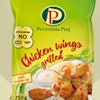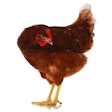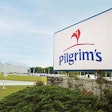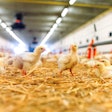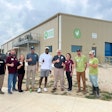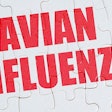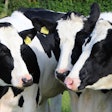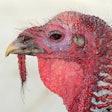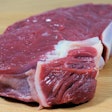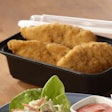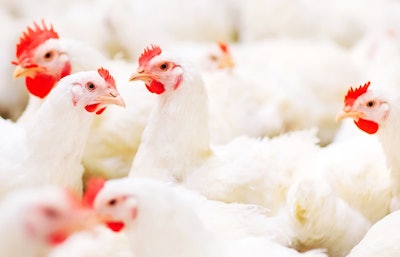
In spite of the businesses challenges, Scandi Standard has achieved strong results in the fourth quarter of its fiscal year. This is according to the Swedish-based company’s managing director and CEO, Jonas Tunestål, commenting on the interim report. Increased costs were offset by adapting sales price, and performance developed favorably in the Ready-to-eat (RTE) segment, he said.
Over the past three months, the firm has set new long-term sustainability goals, focusing on chicken production.
While sales volumes were down, Tunestål highlighted a 26% year-on-year increase in net sales for the quarter to 3.069 billion krona (SEK; US$293 million).
For the same period, operating income (Earnings Before Interest and Taxes; EBIT) was strong at SEK99 million — up from SEK30 million for the same period in 2021 — when demand for chicken is generally weak during the festive period. At 3.2%, EBIT margin for the latest quarter was well above the 1.2% reported one year ago.
For the financial year 2022, Scandi Standard is reporting net sales of SEK12.119 billion — a jump of 20% from the year before (at constant exchange rates). Adjusted EBIT margin has improved from 2.1% in 2021 to 2.4% for the year just ended.
Trends in regional, market sector growth
For all five of Scandi Standard’s business regions, EBIT was higher in the fourth quarter of 2022 than in the same period of the previous year. The Danish operation contributed 31% to overall net sales, Sweden 27%, Ireland 19%, Norway 16%, and Finland 7%. Year-on-year increases were 22%, 28%, 21%, 9%, and 32%, respectively.
Of the SEK3.069 billion total net sales for the group, the Ready-to-cook (RTC) segment generated SEK2.164 billion. RTE SEK756 million, and other businesses SEK149 million. For RTC, reported EBIT was SEK31 million, compared with a negative figure of SEK32 million for 2021. EBIT margin improved from -1.8% to 1.4%. EBIT improved from SEK32 million to SEK53 million for the RTE segment, raising EBIT margin from 5.8% to 7.0%. Although achieving the highest EBIT margin of 10.6% for the quarter just ended, Scandi Standard’s Other segment (covering Ingredients including inedible chicken parts for pet food and energy generation) contributed a lower EBIT of SEK16 million, and EBIT margin of 10.6%. These figures compare with SEK30 million and 28.9%, respectively, for the fourth quarter of 2021.
While the developments in the RTC segment were driven largely by price, Scandi Standard reports that there was strong growth for its RTE products across all sales channels.
All its geographical bases achieved double-digit increases in this segment — ranging from 20% in Norway to 48% in Finland.
For the fourth quarter, food service accounted for 66% of the firm’s RTE sales, retail 16%, exports 10%, and others, 5%. These equate to year-on-year increases of 44%, 13%, 81%, and 30%, respectively.
Scandi Standard brands are within the top 3 in all its home markets. Kronfågel and Den Stolte Hane lead in Sweden and Norway, respectively. In Denmark and Ireland, Danpo and Manor Farm are the second biggest chicken brands.
2022: year of recovery
In the first half of 2021 and into the first quarter of 2022, Scandi Standard saw a downturn in its business driven by inflation. This it compares with a period from 2016 to 292 characterized by high organic growth and stable margins.
For quarter 2 through quarter 4 in 2022, the firm was able to pass through its rising costs on to customers, particularly for its RTC products. Meanwhile, growth in its RTE segment were profitable, and export markets were strong.
Forecast trends for 2023
Although costs are expected to continue rising through the first half of 2023, according to Scandi Standard, it expects these to begin leveling off. However, hedged purchases of energy and feed ingredients will continue to impact costs in the coming months, and increased personnel costs are also likely.
Despite strong competition from beef and pork, the firm sees chicken retaining its popularity with consumers as a result of its low absolute and relative price points. Poultry meat is also expected to remain in consumers’ awareness due to continuing public interest in health and sustainability.
Sustainability goals updated
Reporting on the annual results, Tunestål announced that Scandi Standard adopted new sustainability goals over the past three months. For each goal — covering food safety, climate impact, and animal welfare, among others — key parameters have been set, and an objective defined for 2030.
Currently being validated are its science-based climate targets. Over the next six months, group-wide goals will be integrated into national operations.
In its latest financial report, Scandi Standard has recorded improvements in a number of sustainability measures.
For both the last quarter and for the 2022 year, work-related injuries are lower than in the comparable periods. Already at low levels, the number of critical complaints from customers or consumers are also reduced.
Meanwhile, feed efficiency in chicken production improved from 1.52 in 2021 to 1.50 for last year. This would have contributed to the 10% reduction reported in carbon dioxide emissions per kilo of product.
However, the proportion of flocks treated with antibiotics increased to 10.8%. The figure was 5.2% in 2021. As an indicator of animal welfare, foot score has deteriorated from an average of 9.3 in 2021 to 12.2 last year.
In its 2023 Sustainability Goals, Scandi Standard has set targets of less than 1% for flocks treated with antibiotics, and foot pad scores of less than 5. Rearing mortality target is under 3.5%, and deaths during transportation below 0.18%.
More on Scandi Standard
For the previous quarter — Q3 of 2022 — the group also reported strong growth.
With annual slaughterings of around 178 million, Scandi Standard is among the largest 20 poultry companies in Europe, according to WATTPoultry.com’s Top Poultry Companies.

